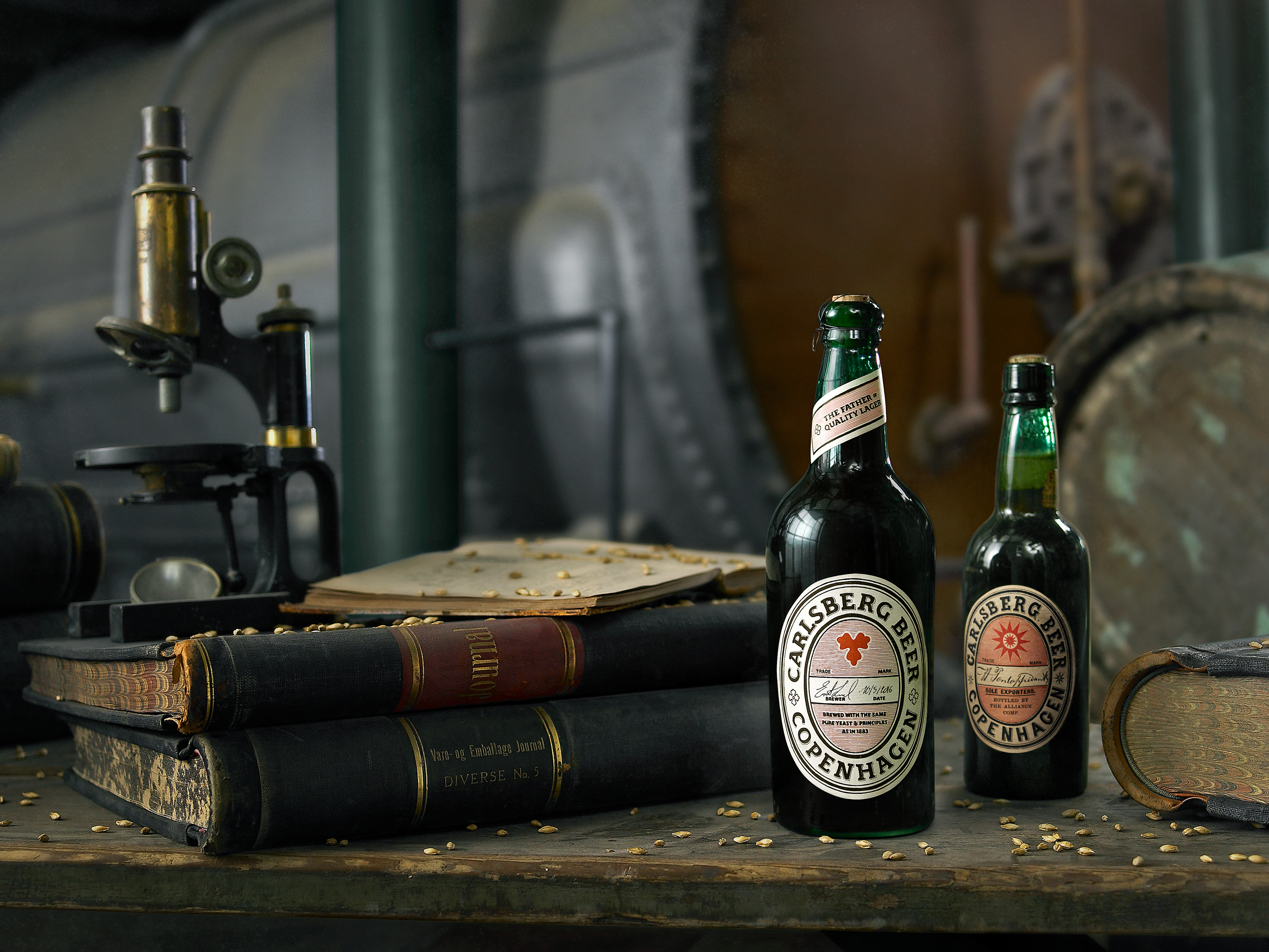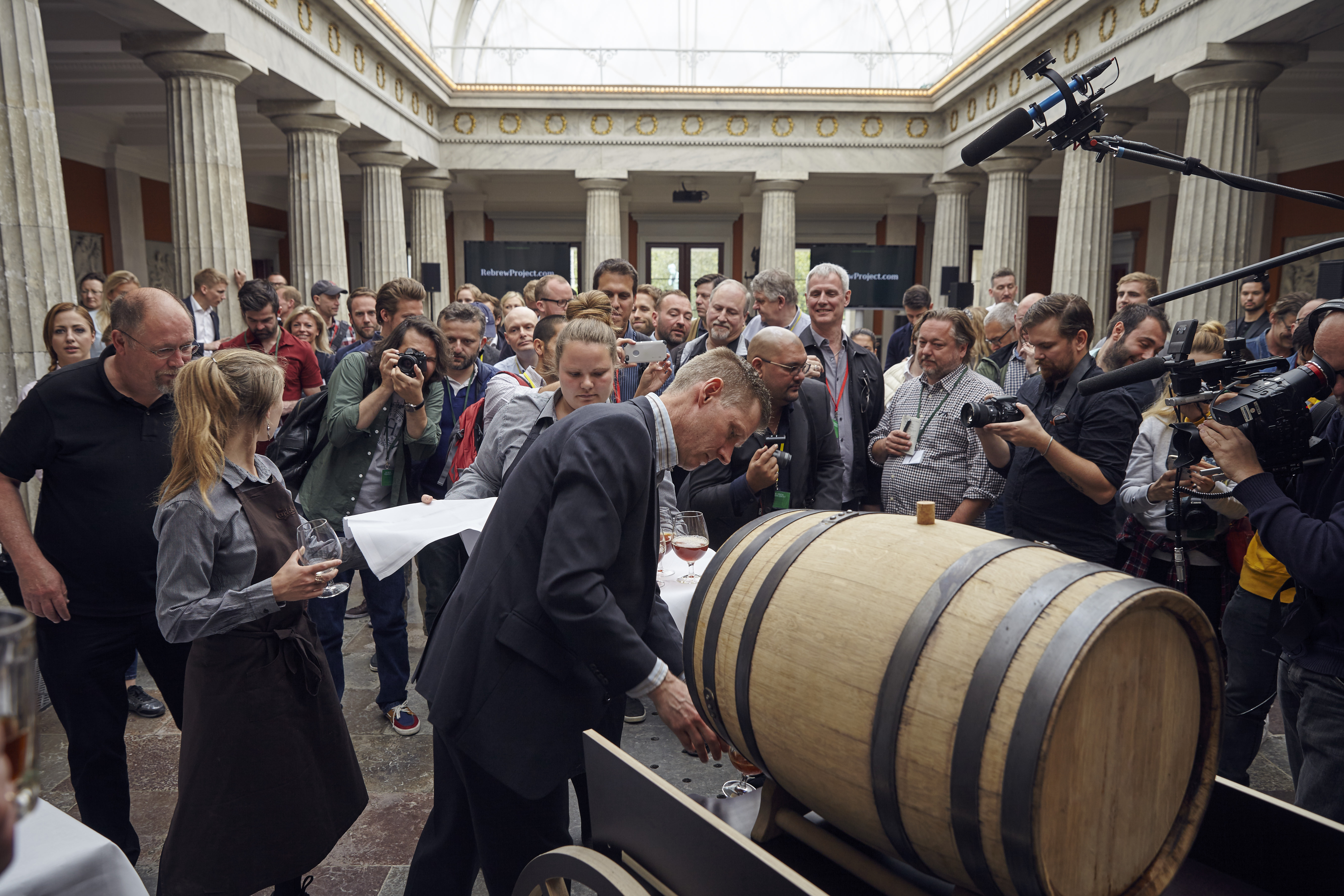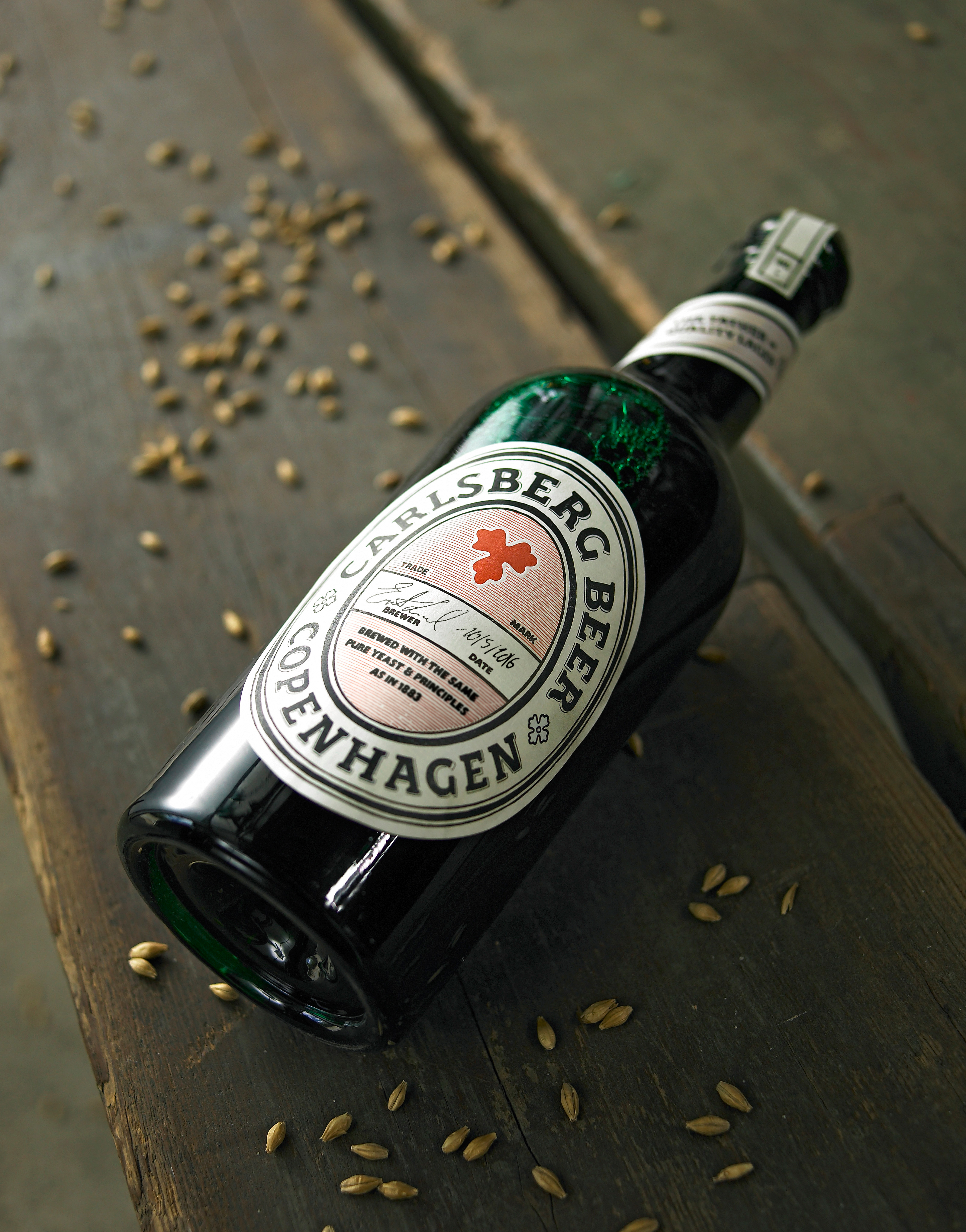Carlsberg Research Laboratory Brews A Beer With Yeast From 1883

With its history dating back to 1847, Carlsberg Brewery assisted in the modern revolution of the popularity of lagers. Originally founded by J.C. Jacobsen in Copenhagen, Denmark, Carlsberg helped establish the yeast strain that is still used in many of today’s industrial lagers. Currently the world’s fourth largest brewer, Carlsberg is now better known throughout the world as being associated with soccer as the brewery is a major sponsor of the sport.
Recently the Carlsberg Research Laboratory located a very old bottle of Carlsberg in the depths of the cellars at Carlsberg, old enough to be a remarkable 133 years old. The laboratory extracted the living yeast cells from the remnants of the beer and used this yeast to what they term to “rebrew” a fresh batch of this 133 year-old beer with the attempt of using similar hops and malts to re-create a historic brew for modern times.
In the year 1833, Carlsberg scientists and brewers developed its original pure yeast strain. Carlsberg gave the pure yeast that was named Saccharomyces Carlsbergensis, away at no charge to other brewers including Heineken. “Without it, we wouldn’t have the type of beer that is now 90 percent of the world’s market,” stated Britain’s leading Beer Historian Martyn Cornell in the news release.
In honor of the 140th anniversary of the Carlsberg Research Laboratory, leading scientists and brewers at the Laboratory have now rebrewed the world’s first quality lager in the most authentic manner possible. In doing so the brewers used this extracted original pure yeas along with the exact same brewing recipe that was found in its archives. As best as possible the brewers emulated the same hops and malts while using the brewing techniques that were common back in 1883.
Chairman of the Carlsberg Foundation and the Board of Trustees of the Carlsberg Research Laboratory, Professor Flemming Besenbacher says: “The Laboratory is renowned for some of the most extraordinary inventions of the past century, ranging from Professor Dr. Emil Chr. Hansen’s method of purifying yeast to the invention of the pH scale, the concept of protein structures and the characterization of enzymes. Carlsberg Research Laboratory remains a crown jewel in Carlsberg’s jewellery box and this beer, the first quality lager, was rebrewed in honour of the Lab’s historical research developments and its present day capabilities.”
For the first time in more than a hundred years, men and women will taste a beer, that not only is the forefather to most lager beers today, but that also displays some of the unique capabilities at the Carlsberg Research Laboratories.
Steve Hindy, Chairman and Co-founder of Brooklyn Brewery, and former Chairman of American Brewers Association, comments: “Being able to go into the archive at Carlsberg and recreate that original beer is very exciting, and I can’t wait to taste it.” Click on the link for a video of Garrett Oliver, Hindy’s partner at Brooklyn Brewery, discussing tasting notes for this Carlsberg creation.

Below are notes on how Carlsberg recreated this 133 year-old beer.
We used floor-malted barley malt made on a contemporary pneumatic system at Stauning Whisky A/S in Skjern, near the Town of Aarhus. Floor malting was the malting technique that was used 140 years ago.
The brewing water’s content of mineral salts mimics that of a 68’ deep well that was dug out in January 1883. The well draws water from “Saltholmskalken”, a chalk layer that constitutes the bedrock of most of the Copenhagen region.
J.C. Jacobsen originally considered Scottish and English barley varieties to be superior to Danish but as the agricultural sector modernized in the 1870s, barley quality also improved. One of the original barley varieties was ‘Gammel Dansk’ (Old Danish), which Carlsberg used at the time and which was also used for the re-brew lager beer.
The beer is neither filtered nor pasteurized, but has cleared somewhat through natural sedimentation. However, yeast sediments and haze might occur in the re- brew lager. Historically, gelatin was occasionally used to clear beer but the need to do so with re-brew seemed unnecessary, due to the use of purified yeast.
So, we have not used gelatin or other additives in the re-brew lager.
The recipes of the time were not specified to the same level of detail as is standard today. Back in the early 1880s, Carlsberg was more or less only brewing one sort of beer and typically three or four times a day, meaning that the skilled brewers knew the brewing procedures well and had no need to read recipes or note down details in journals, except for the ratio of water, malt and hops used. However, we know exactly what equipment was available back then and how this was used and this has given us the necessary information about the procedures for mashing and brewing.
Glassblower Peer Nielsen is from Holmegaard, which is the oldest glassworks in Denmark (founded 1825) and has been the supplier of beer bottles to Carlsberg ever since the 1850s. Peer worked together with glassblower Anders Raad in his glass studio to make the original 30+ bottles using a new wooden mould and dark green glass. The bottle was manufactured exactly as it was done 140 years ago. The 1,200-degree hot glass was mouth-blown by the Holmegaard glassblowers through a small pipe into a wet local wooden mould.
Holmegaard collaborated with Carlsberg and Næstved Museum and enthusiastic amateur glass collectors in Denmark. Holmegaard established that automated/machined bottle making using metal moulds began in the 1890s. Therefore, a bottle from the 1870s had to be mouth-blown into a wooden mould.
Carlsberg knew for certain that the bottle had to be 3 1⁄4” of a pot.

For more information on the Carlsberg Rebrew Project visit www.rebrewproject.com, where you can sign up to be notified of upcoming global tastings of the Rebrew. This extremely limited edition beer will not be available in stores but there will be a few opportunities to sample it on draft in the months ahead. We surely hope that this will make an appearance here in Portland.




